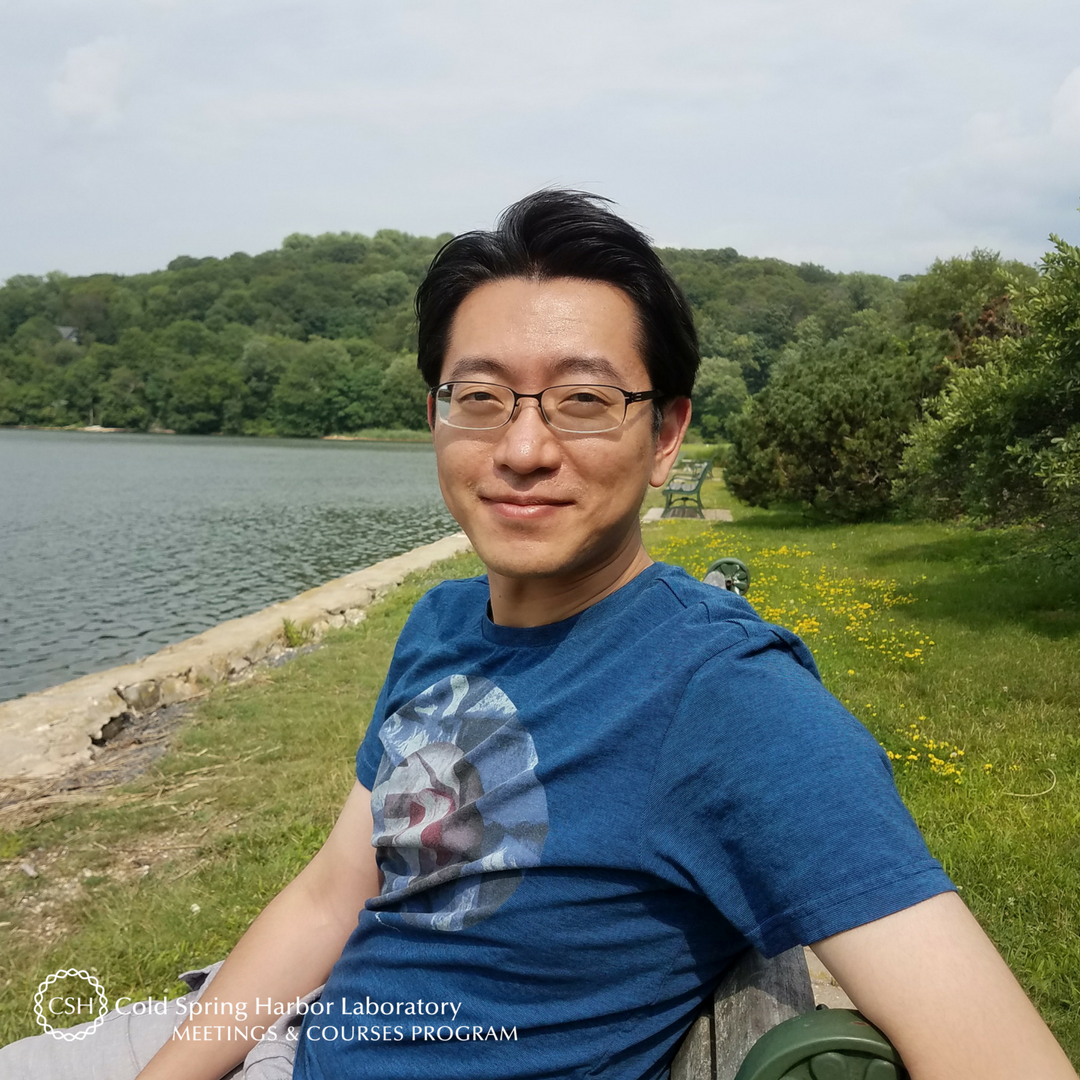Meet Kazumi Hirano, a senior researcher at the Japanese National Institute of Advanced Industrial Science and Technology (AIST) in Japan. Since March of this year, he joined Dr. Jenny Hsieh’s laboratory and the University of Texas at San Antonio (UTSA) as a visiting researcher. Along with two fellow labmates, Kazumi spent the better part of this week with us at the 2019 meeting of Development and 3D Modeling of the Human Brain. His first meeting at CSHL was “wonderful and meaningful” that provided him with the “opportunity to talk with wonderful scientists;” many of whom were the speakers who gave him “more motivation and suggestions for [his] work.”
What are your research interests? What are you working on?
I am interested in how the human brain develops into such a beautiful and functional structure composed by region-specific cells. More specifically, I am focusing on the hippocampal development in humans.
The hippocampus is a crucial and unique region in the brain. However, hippocampal development in humans are largely unknown, including how to differentiate and how to introduce the architecture. By elucidating this mechanism using in vitro 3D modeling such as brain organoids/spheroids, I hope to contribute to creating the therapy for several neurological diseases such as epilepsy and Alzheimer’s disease.
How did you decide to make this the focus of your research?
My background is in stem cell based on glycobiology and epigenetics. As a graduate student at Soka University (Japan), I studied glycan functions in early developmental stage by using ES/iPS cells in Prof. Shoko Nishihara’s laboratory. I learned how interesting stem cells are. Although the brain is one of the essential organs, human brain development is largely unknown. Therefore when I moved to AIST, I started a new project using human fetal neural stem cells (hfNSCs) with Dr. Masakazu Namihira. Our team established proper culture method of hfNSCs for several analysis and figured out the important role of certain epigenetic factors during neuronal differentiation.
How did your scientific journey begin?
I’ve been curious about regenerative medicine since high school. When I was an undergraduate student, Dr. Shinya Yamanaka discovered iPS cells, which is a novel type of pluripotent stem cell induced from soma cells. At that time, I felt there was huge potential in this field to contribute to regenerative medicine. To date, this passion leads me to study stem cells including ES/iPS cells and NSCs.
Was there something specific about the Development and 3D Modeling of the Human Brain meeting that drew you to attend?
Every topic and poster presentation satisfied my intellectual curiosity. I was very excited because I am struggling with seeking proper organoid conditions for proper analysis.
What is your key takeaway from the Meeting? And how will you apply it to your work?
I was impacted by the first topic of this meeting. Dr. Magdalena Zernicka-Goetz mentioned that “self-organization” is one of the key phrases of 3D modeling. Her great work indicated that the communications between embryonic and extra-embryonic tissue are necessary for proper self-organization and polarization during early embryonic development. One of my key takeaways from this meeting is how to induce self-organization. I can apply this point of view to develop my culture conditions of region-specific organoids.
What do you like most about your time at CSHL?
The weather wasn’t conducive to spending time outdoors but I had a lot of opportunity to talk with other researchers during breakfast, lunch and dinner time. We also got a group photo under the rain and snow twice -- I think it’s memorable!!!
Thank you to Kazumi for being this week's featured visitor. To meet other featured scientists - and discover the wide range of science that takes part in a CSHL meeting or course - go here.















